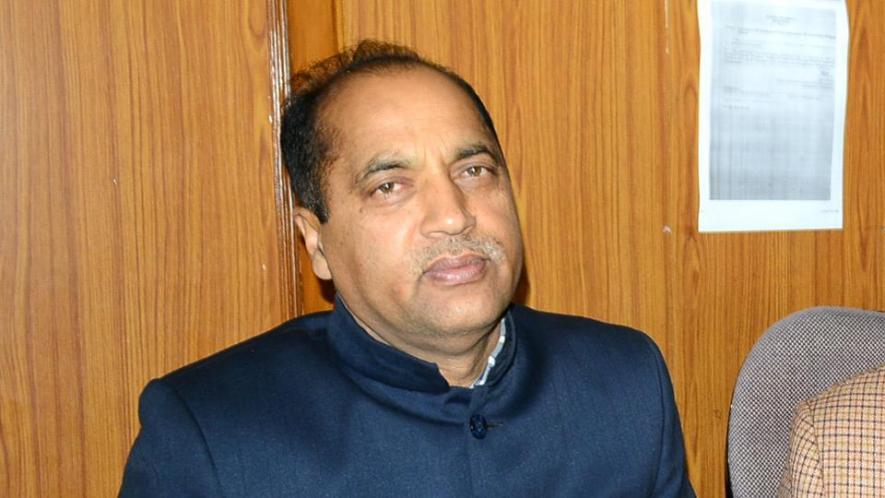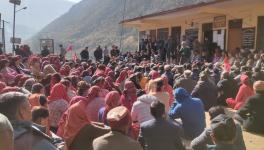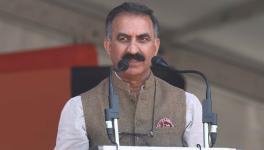Himachal Stands at Crossroads as Huge Debt Burden Looms

Image Courtesy: Hindustan Times
As the Bharatiya Janata Party-led Himachal Pradesh (HP) government completes two years in office on December 26, a huge debt burden of Rs 51,000 crore looms over the state. This massive debt will have a huge impact on the state’s trajectory of growth. In this backdrop, the narrative of getting support from private investors for the state’s development is a path fraught with more problems than solutions.
According to a report by the Comptroller and Auditor General (CAG), tabled in the winter session of the Assembly, the state’s debt stood at Rs 51,000 crore in the last financial year, which is an increase of 8% against last year. The fiscal liability of the state is 37.55% of the state GDP (gross domestic product), which is definitely above the prescribed 22.3% by the 14th Finance Commission.
What does this mean? In very simple terms, this means that the government has limited options. Since the old Nehruvian model of active Central support for financially unviable states, such as Himachal, has been dumped by the Narendra Modi government, the state government can no longer depend on central grants to meet its financial liability.
The Centre is itself caught in a quagmire after demonetisation and Goods and Services Tax and the fall in expected growth rate. The revenues of the Centre have fallen by Rs 2 lakh crore. So, in order to run the government, the HP government often borrows money from financial institutions. But this borrowing also has a limit. Also, now the interest on financial liability is huge.
In such a situation, Himachal Pradesh faces a serious challenge, as it has to support a massive services sector that has developed over the years. With this development trajectory, the state had become one of the model states in developmental parameters. But this was because of active support from the Centre as also the fact that had ‘special category status’ (However, it was robbed of this status by the Planning Commission two decades ago). Just imagine that by the 1980s, this hill state was fully electrified. Going by the mountainous terrain and very less density of population, full electrification was a challenge, which was met in a short span because of massive stimulus from the state and the entre. That’s why the service sector could also grow.
The electricity department had nearly 45,000 people overlooking the department two decades ago, Now, this number has dwindled to less than 13,000. Similarly, health, education and road networks were also developed. It is interesting to revisit the debate during the formative days of Himachal and how Dr Y S Parmar, the founder of the state, had dealt with its developmental trajectory. All he emphasised was the need for active State support.
But, now the present dispensation has shifted the developmental discourse that is more private investment-guided. A grand show with lots of money spent on attracting the private investors was held in Dharamshala recently. Whether this will actually attract investment is a big question. For the simple reason that a recent study by ICRA (a credit rating agency) underlined. It stated: “Bankers said that with private investment practically coming to a halt, there was little demand for corporate credit.” So, when private investment is not moving to some of the infrastructurally advanced states, why would it enter a terrain like HP?
Finally, the state and Central governments, both headed by BJP, do give an economic advantage to HP. The state government must target its resources from hydro and mount pressure on the Centre to get its share from the neighbouring states, as stated in the Punjab Reorganisation Act 1966. The state must press for 15% royalty and 25% equity in all hydro projects in the state.
The SJVNL (Satluj Jal Vidyut Nigam Limited), primarily tasked to harness water from the Satluj river, is now constructing projects even in Bhutan and earning huge dividends. This was not the mandate of SJVNL. HP must assert its right for its takeover. Likewise, the state must assert for its right even in hydro projects owned by private and public sector units, or a share based on equity.
The BJP government should also curtail unnecessary expenditure just to showcase its achievements. One such exercise is “Jan Manch” (people’s grievance forum), which is held in every constituency, bypassing the local elected institutions, on which a humongous amount is spent. All those who turn up for these Jan Manchs are provided a Dham (local feast) and, according to the Opposition parties, crores of rupees have been spent on these.
Similarly, other wasteful expenditure, such as buying new cars for ministers etc., should be avoided. It appears that the state government has no money for development works, but have plenty to spend on its ministers and prop its image.
If expenditure is not curtailed, there is fear that perhaps months later, the HP government may be unable to even pay salaries to its employees!
The writer is former Deputy Mayor of Shimla. The views are personal.
Get the latest reports & analysis with people's perspective on Protests, movements & deep analytical videos, discussions of the current affairs in your Telegram app. Subscribe to NewsClick's Telegram channel & get Real-Time updates on stories, as they get published on our website.
























